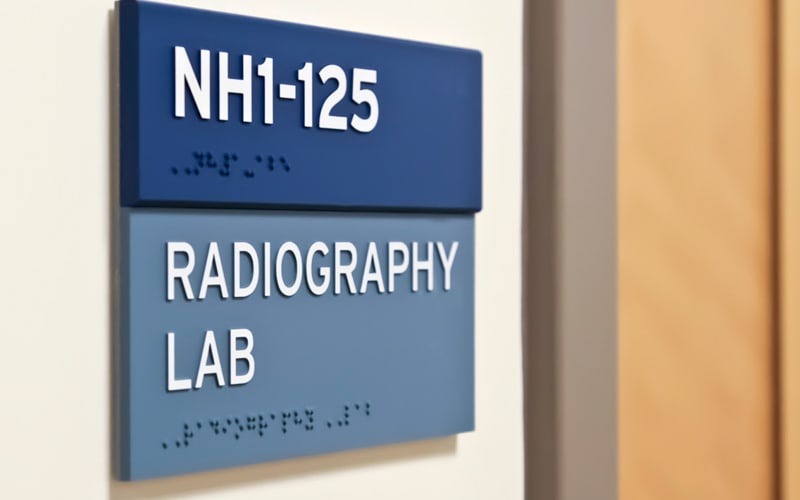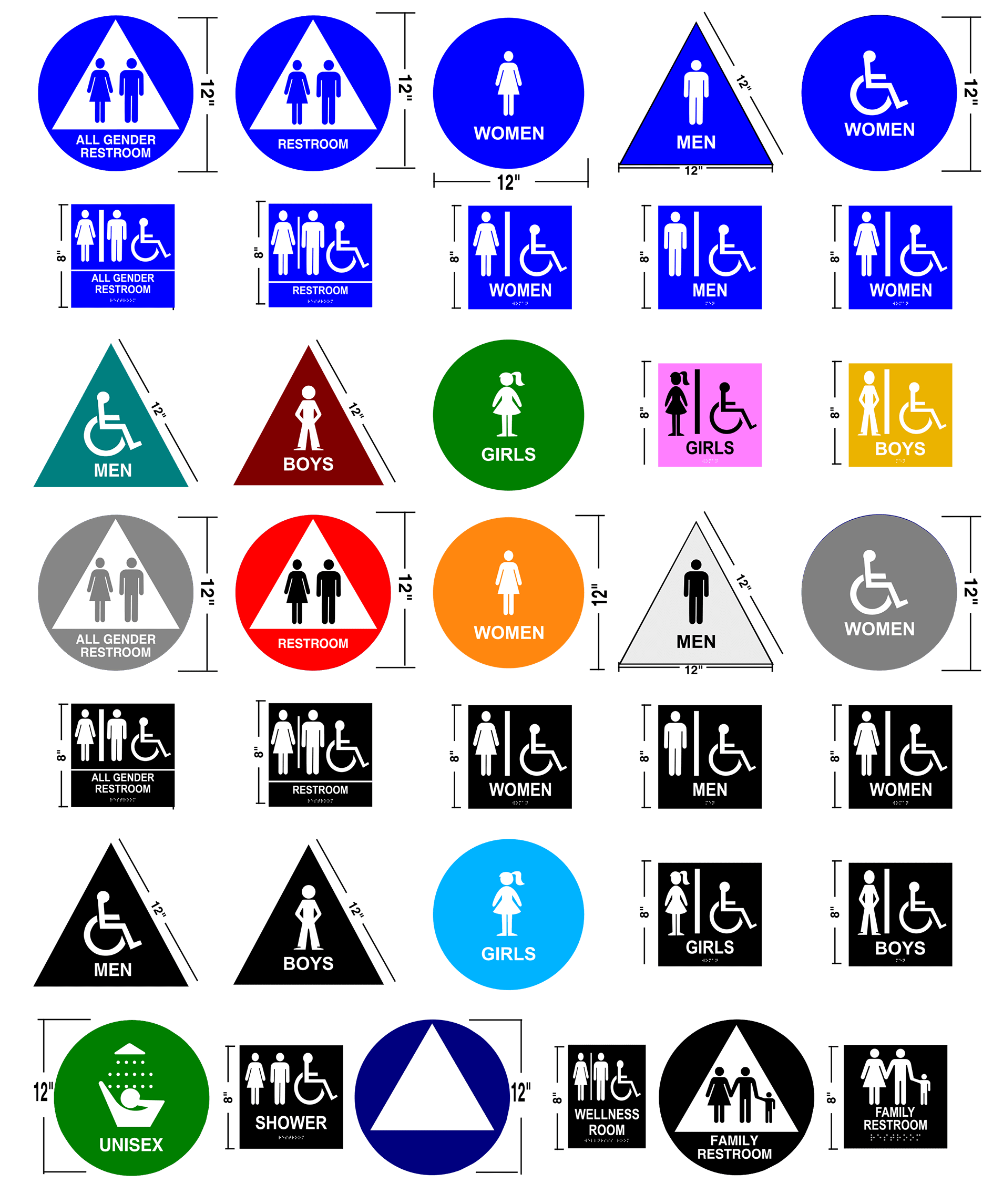Personalizing ADA Signs to Meet Your Certain Needs
Personalizing ADA Signs to Meet Your Certain Needs
Blog Article
Checking Out the Secret Functions of ADA Indications for Improved Availability
In the world of availability, ADA indicators work as silent yet powerful allies, making certain that rooms are comprehensive and navigable for individuals with impairments. By incorporating Braille and responsive components, these indicators break barriers for the visually impaired, while high-contrast shade systems and readable font styles cater to diverse visual demands. Moreover, their strategic positioning is not approximate yet rather a computed initiative to assist in smooth navigation. Yet, beyond these features exists a deeper story regarding the development of inclusivity and the ongoing dedication to producing fair areas. What extra could these indications signify in our search of universal ease of access?
Importance of ADA Compliance
Making certain conformity with the Americans with Disabilities Act (ADA) is crucial for promoting inclusivity and equivalent access in public areas and workplaces. The ADA, established in 1990, mandates that all public facilities, employers, and transportation solutions accommodate people with impairments, ensuring they take pleasure in the very same legal rights and opportunities as others. Compliance with ADA requirements not just meets legal commitments yet also enhances a company's track record by showing its dedication to variety and inclusivity.
One of the crucial facets of ADA compliance is the implementation of accessible signs. ADA indications are developed to guarantee that individuals with handicaps can easily browse with structures and spaces.
Furthermore, adhering to ADA regulations can minimize the danger of legal effects and potential penalties. Organizations that stop working to follow ADA standards may face charges or claims, which can be both harmful and financially difficult to their public image. Hence, ADA conformity is important to fostering a fair environment for everybody.
Braille and Tactile Components
The incorporation of Braille and responsive aspects right into ADA signage embodies the principles of accessibility and inclusivity. These functions are essential for people that are blind or visually impaired, enabling them to browse public spaces with higher freedom and confidence. Braille, a tactile writing system, is important in supplying created information in a style that can be easily perceived via touch. It is normally placed below the matching message on signs to ensure that individuals can access the details without visual aid.
Responsive components expand beyond Braille and consist of elevated icons and characters. These components are designed to be noticeable by touch, permitting people to recognize area numbers, toilets, leaves, and various other vital areas. The ADA establishes certain standards pertaining to the dimension, spacing, and placement of these tactile components to maximize readability and make sure uniformity across various atmospheres.

High-Contrast Color Systems
High-contrast color pattern play a pivotal duty in improving the visibility and readability of ADA signs for individuals with aesthetic disabilities. These schemes are essential as they take full advantage of the distinction in light reflectance in between text and history, guaranteeing that indicators are quickly noticeable, also from a distance. The Americans with Disabilities Act (ADA) mandates using particular shade contrasts to accommodate those with restricted vision, making it an important facet of compliance.
The efficiency of high-contrast colors depends on their capability to stand out in different lights conditions, consisting of dimly lit atmospheres and areas with glow. Typically, dark text on a light history or light text on a dark history is used to achieve ideal comparison. Black message on a white or yellow background supplies a raw visual difference that helps in fast recognition and comprehension.

Legible Fonts and Text Size
When considering the try this website design of ADA signs, the choice of readable font styles and suitable text size can not be overemphasized. The Americans with Disabilities Act (ADA) mandates that fonts have to be sans-serif and not italic, oblique, manuscript, extremely ornamental, or of uncommon type.
The size of the text additionally plays a crucial role in availability. According to ADA guidelines, the minimum message height should be 5/8 inch, and it should raise proportionally with watching range. This is especially important in public rooms where signage requirements to be checked out rapidly and accurately. Uniformity in text dimension adds to a natural visual experience, assisting people in navigating settings effectively.
Moreover, spacing between letters and lines is integral to clarity. Adequate spacing stops characters from appearing crowded, improving readability. By sticking to these requirements, developers can substantially improve accessibility, making sure that signage serves its desired purpose for all people, no matter their aesthetic capacities.
Efficient Positioning Strategies
Strategic positioning of ADA signage is necessary for making best use of ease of access and making sure conformity with lawful criteria. Effectively located indications lead individuals with disabilities successfully, promoting navigation in public spaces. Secret considerations consist of elevation, proximity, and visibility. ADA standards specify that signs should be mounted at a height between 48 to 60 inches from the ground to ensure they are within the line of view for both standing and seated people. This standard height range is critical for inclusivity, making it possible for wheelchair users and individuals of differing elevations to accessibility details effortlessly.
Furthermore, indications must be placed adjacent to the lock side of doors to enable easy recognition prior to access. This positioning helps people situate spaces and spaces without obstruction. In instances where there is no door, indications ought to be situated on the nearby nearby wall. Consistency in indicator placement throughout a facility boosts predictability, minimizing confusion and boosting general user experience.

Final Thought
ADA signs play a crucial function in promoting availability by incorporating attributes that attend to the demands of people with specials needs. These components jointly cultivate a comprehensive atmosphere, highlighting the significance of ADA compliance in making certain equivalent gain access to for all.
In the realm of ease of access, ADA signs serve as silent yet powerful allies, guaranteeing that spaces are inclusive and navigable for people with handicaps. The ADA, established in 1990, mandates that all public facilities, companies, and transport services fit individuals with impairments, ensuring they enjoy the exact same rights and possibilities as others. ADA Signs. ADA indicators are created to guarantee that people with handicaps can conveniently browse with buildings and rooms. ADA standards state that signs need to be installed at a height in between 48 to 60 inches Your Domain Name from the ground to ensure they are within the line of view for both standing and seated people.ADA signs check out here play an essential function in promoting availability by integrating attributes that resolve the requirements of people with impairments
Report this page